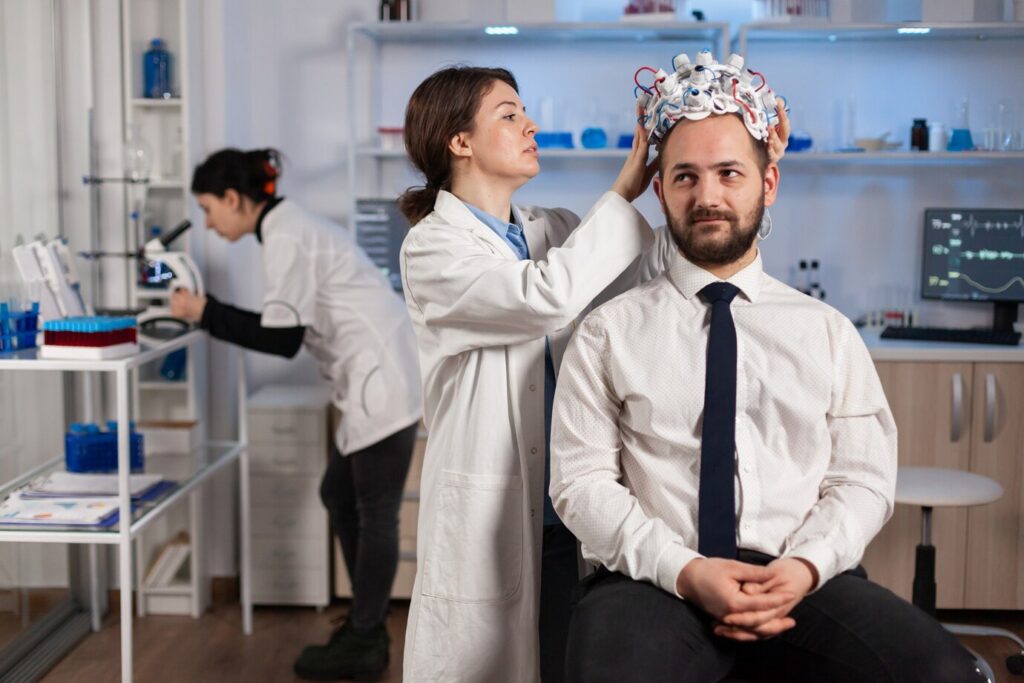Rewire Your Brain from Dr. Andrew Huberman: 7 Science-Backed Ways to Unlock Neuroplasticity
Key Takeaways: What Is Neuroplasticity? Neuroplasticity is your brain’s ability to change—physically and functionally—based on experience, learning, and behavior. Think of it as the brain’s built-in “upgrade” system. Each time you practice a new habit or learn something different, you’re reshaping your neural connections. Repeat it enough, and those connections become faster and stronger. It’s not just a metaphor—this rewiring happens at a cellular and structural level in your brain. Does Neuroplasticity End After 25? It’s a common myth that your brain stops developing in your mid-20s. While it’s true that neuroplasticity is most active during childhood and adolescence, your brain remains adaptable for life. In fact, many adults successfully learn new languages, skills, and behaviors well into their 60s and beyond. Dr. Andrew Huberman’s Groundbreaking Work Dr. Andrew Huberman, a neuroscientist at Stanford and founder of the Huberman Lab, has helped bring neuroplasticity research into the mainstream. His work explores how behavior, environment, and biology influence the brain’s ability to adapt. Key findings from his lab include: The Huberman-Approved Neuroplasticity Toolkit Here’s how you can apply Dr. Huberman’s insights to rewire your brain effectively: 1. Use 90-Minute Focus Sessions Your brain operates in ultradian rhythms—natural cycles of about 90 minutes. Plan your deep work, learning, or creative efforts in these blocks, followed by a 10-15 minute rest. 2. Practice Non-Sleep Deep Rest (NSDR) Techniques like yoga nidra or guided relaxation help reset your nervous system and enhance your brain’s ability to absorb and retain new information. 3. Prioritize High-Quality Sleep Sleep isn’t just rest—it’s when the brain solidifies new connections. Aim for 7–9 hours nightly, and maintain a consistent sleep schedule for best results. 4. Move Your Body Daily Regular aerobic exercise increases brain-derived neurotrophic factor (BDNF), a molecule that supports neurogenesis (new brain cell growth) and cognitive function. 5. Practice Mindfulness or Meditation Just 10–20 minutes a day of mindfulness can reduce stress, improve focus, and even increase gray matter density in the brain regions responsible for learning and memory. 6. Expose Yourself to Novelty Trying something new—whether it’s a hobby, language, or travel experience—stimulates the brain and encourages the formation of new neural pathways. 7. Visualize Success Mental rehearsal is almost as effective as physical practice. When you imagine a skill or habit clearly and repeatedly, you’re strengthening the brain circuits that support it. Unlocking Brain Health with DAYHOFF At DAYHOFF, we believe optimizing brain health starts with understanding your biology. Through advanced biomarker testing, we help Canadians get personalized insights into factors that influence mental clarity, focus, energy, and stress resilience. When you understand how your sleep quality, inflammation, blood sugar, hormone levels, and nutrient status affect your brain, you can take targeted steps to improve your cognitive performance. DAYHOFF goes beyond diagnostics—we provide actionable recommendations and interactive dashboards to help you support your brain’s ability to change and grow. Final Thoughts: Your Brain Is Built to Change Neuroplasticity isn’t just a scientific term—it’s a tool you can use to become more focused, resilient, creative, and mentally agile. Whether you’re trying to break a bad habit or build a new skill, your brain is capable of change—at any age. By using the strategies recommended by Dr. Andrew Huberman and monitoring your health with DAYHOFF, you can take control of your mental performance and unlock your brain’s full potential. Ready to take your brain health seriously? Explore how DAYHOFF’s biomarker testing and brain-optimization tools can help you identify what’s holding you back—and what will push you forward.




